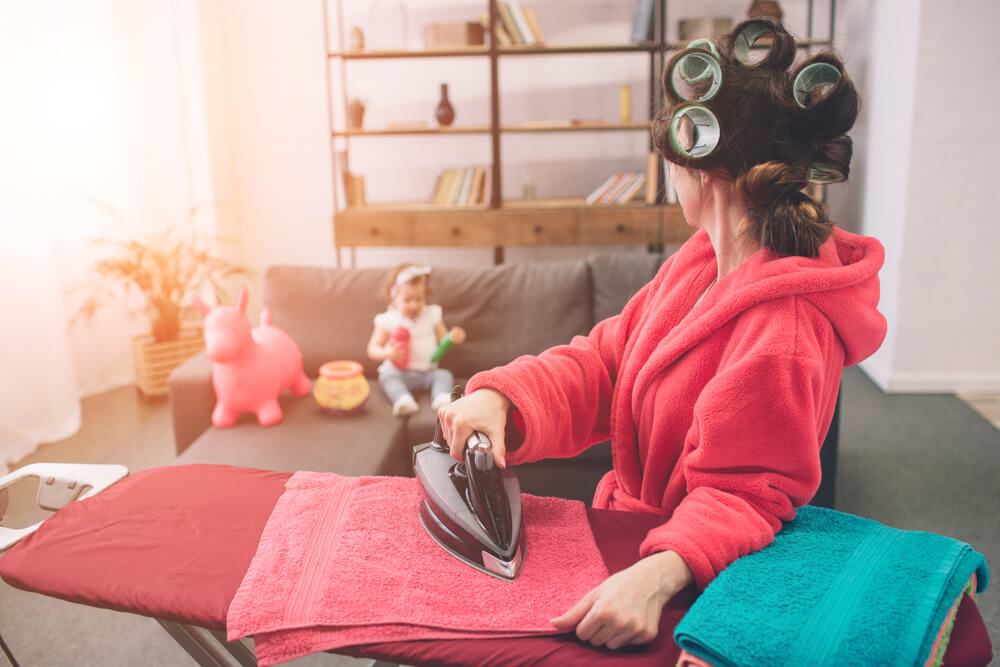‘Sittervising’ — The Hottest New Trend in Parenting

If you haven’t heard of sittervising, you’re missing out on one of the hottest new trends in parenting. In this article, we’ll define the term, discuss the benefits of sittervising, and talk about ways you can begin implementing it today.
Contents:
- What Is Sittervising?
- The Many Benefits of Sittervising
- Disadvantages of Sittervising
- Getting Started With Sittervising
What Is Sittervising?

fizkes/Shutterstock.com
Sittervising is a mash-up of two words: “sitting” and “supervising.” Thus, sittervising is simply supervising your kid while in a sitting position. Yeah, it’s a no-brainer, at least on the surface.
Parents have technically been sittervising for centuries, but the term itself was just recently coined by parenting blogger and expert Susie Allison. The need to label such a basic parenting task is a backlash against the ever-mounting pressure modern parents feel to entertain their children around the clock.
Посмотреть эту публикацию в Instagram
By giving this laid-back form of supervision a trendy name and a place to live on the Internet, Susie attempts to normalize this somewhat hands-off approach to parenting. She basically gives busy moms and dads permission to take a little load off from time to time while simultaneously performing their primary roles as parents.
And better yet, she backs it up with science. That’s right. According to the blogger (who holds a Master’s degree in Early Childhood Education), sittervising is not just beneficial for parents, but great for kids as well. More on that later.
How Does Sittervising Work?
Despite its name, you don’t have to actually be in a seated position to sittervise. A more accurate definition of the concept would be providing supervision for children while engaged in some other activity of your choosing.
For example, you can take care of household chores like laundry or dishes while watching the kids play. Alternatively, you could listen to a podcast or exercise while supervising your children.
The only rule for sittervising is that you’re providing basic supervision without being directly involved in your child’s activity. Of course, you will need to intervene if your child’s play becomes dangerous to themselves or others.
The Many Benefits of Sittervising
As mentioned above, sittervising actually has loads of benefits for moms, dads, and kiddos alike. Let’s look at some of these now.
Why Sittervising Is Good for Kids

Oksana Kuzmina/Shutterstock.com
It may be easy to imagine how sittervising could have benefits for parents. But what are its advantages for children? Let’s discuss.
Too Much Involvement Hinders Child Development
For one, sittervising allows children to do what they do best—that is, play! As it turns out, experts say playtime is crucially important for a child’s development. When kids engage in play, they’re not just having fun. They’re also learning important skills such as problem-solving, communication, and critical thinking.
Of course, parents can play alongside their children. But when they do, it changes the nature of playtime. While moms and dads may indeed be spending quality time with their children by joining in their games, they could also be robbing them of some important lessons.
Think back to the last time you played a game with your child. Did you let them play independently, or did you provide instructions and help them with ideas along the way? Many well-intentioned parents find themselves doing the latter. And while it may be okay from time to time, it’s also important that children learn to navigate playtime on their own and with peers.
Independence Is Good for Kids
The problem with overinvolved parents is that they create kids who struggle with independence. The solution? Sittervising.
By giving children the space to play and explore on their own, parents are encouraging kids to thrive with confidence and autonomy. These are skills that will benefit children for a lifetime!
Believe it or not, independence is actually really good for strengthening bonds with your child as well. Children need to learn that they can play alone for a while and you’ll still be there when they return. If you’re always playing with them, your child won’t have this experience. Instead, they may feel as if they need you by their side constantly. This could create problems and anxieties later on—when they start school, for instance.
Sittervising Promotes Social Skills
Sittervising not only promotes confidence and independence, but it may also help with social skills as well. Overinvolved parents may inadvertently take the place of a playmate, and kids could come to rely on mom or dad to play with them as a friend would. Since they fill this void, kids have no need to seek out a companion. And as with other skills, if children don’t use social skills, they lose them (or worse, they may never acquire them in the first place!).
Does all of this mean parents should never engage in play with their little ones? Not at all! It just means that you can take a break now and then with the reassurance that doing so is actually beneficial—not harmful—to your kids.
How Sittervising Benefits Parents

Nina Lishchuk/Shutterstock.com
If you’re like most moms and dads, you won’t turn down the opportunity to sit and relax for a bit. But there’s more to sittervising than just physically resting. Here are some other important advantages to consider.
Sittervising Relieves the Pressure to Entertain 24/7
With sittervising, you can take comfort in the fact that you don’t have to be “on” all the time in terms of entertaining your youngsters. There’s so much societal pressure on busy moms and dads today that they may feel as if they’re neglecting their children if they’re not spending every spare moment playing with them.
This is why the very idea of sittervising can be refreshing for parents as they realize that some distance between parent and child is actually necessary. This often lightens the weight of parenthood, if ever so slightly, and prevents feelings of parental burnout.
Moms and Dads Are People Too, Says Sittervising
Another pro of sittervising is that it acknowledges that moms and dads are also people with individual interests and needs. When we become parents, it’s easy to forget this fact. After all, your whole world changes to accommodate another human being—namely, your child. It’s no wonder the needs of mom and dad take a back seat.
While it’s true that kids (especially babies and toddlers) need around-the-clock care, it’s also important that parents honor their own needs and autonomy. Sittervising allows parents to respond to their own inclinations to rest, catch up on chores, or entertain themselves as opposed to constantly engaging with their children. Sittervising respects and honors the needs of every member of the family, parents included.
Sittervise in pleasure and do not worry about the safety of your children. Hear what’s going on around them and follow their movement around the map with the Findmykids app.
Disadvantages of Sittervising

fizkes/Shutterstock.com
While there is no inherent harm in sittervising per se, there could be some drawbacks associated with this parenting concept. We’ll discuss some of those now.
Too Much Sittervising?
Like other parenting trends, sittervising could become problematic for parents and/or children if taken too far. Sittervising doesn’t mean you should never play with your toddler, for example. And if your kids are used to you engaging in activities with them and you suddenly stop all involvement, it could be upsetting for them. We advise implementing sittervising a little at a time and then finding a balance that works for your family.
Sittervising Criticism
Sittervising isn’t a novel concept. It’s something parents have done since the beginning of time. At the same time, it’s not been the most popular parenting style as of late. Contemporary moms and dads seem to want to do it all, and they may feel the need to prove their parenting skills or enthusiasm by being up for playtime anytime.
That means sittervising will inevitably face some criticism. Some parents may think it’s tantamount to lazy or even neglectful parenting. Of course, you don’t have to defend your parenting choices to anyone else. Only you know what’s best for your children and your family!
Getting Started With Sittervising

Estrada Anton/Shutterstock.com
As with any other parenting trend, there could be somewhat of a learning curve when you first start implementing sittervising with your kids. Don’t expect it to happen overnight.
For instance, if you’re transitioning from “super-fun” mom or dad to “sitterviser in chief,” your kid may need some time to adjust. Little ones who are used to having playtime directed by their parents might not know how to act when left to their own imagination. That’s ok—give them the time they need.
One suggestion for launching sittervision in your household is to begin with small increments of time where children are asked to play on their own. Start with five minutes and go from there.
The Many Shades of Sittervising
Sittervising isn’t a one-size-fits-all approach. In fact, there are probably as many versions of sittervising as there are families. Despite its widespread use, sittervising has become quite the trend on social media recently.
Join in the conversation by sharing this article with your friends and followers. Don’t forget to comment on how (or if) sittervising is taking root in your home!
The picture on the front page: Studio Romantic/Shutterstock.com
Проверьте электронный ящик



















